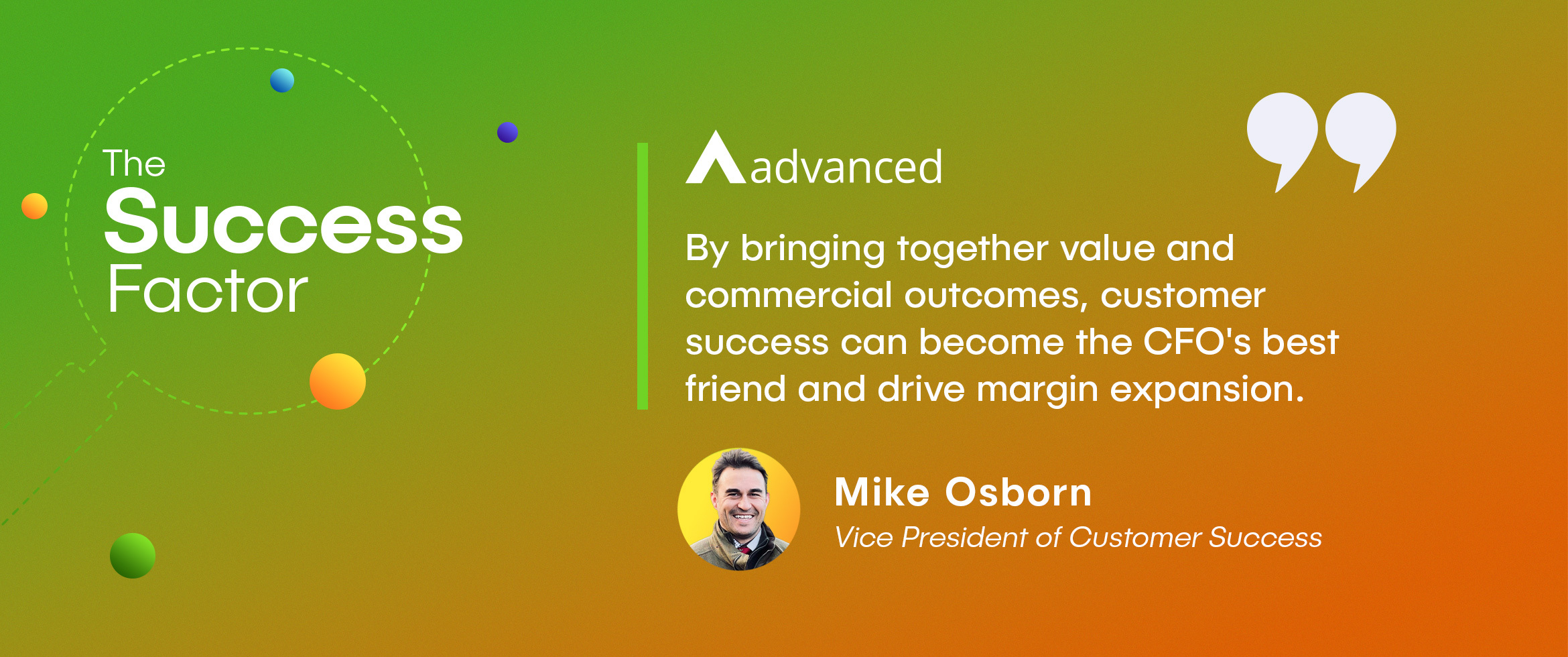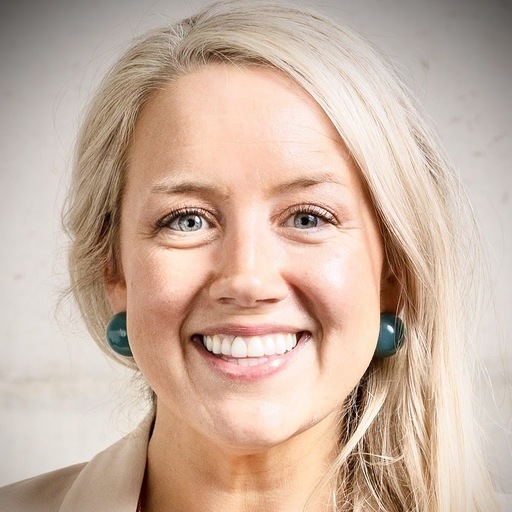2023-01-24

How Advanced keeps costs low and scales CS team capabilities via digital engagement

9 min read
Keeping costs low and scaling team capabilities via digital engagement is essential in 2023. And this is especially true for SaaS businesses with a large number of clients and products.
Indeed, according to Planhat’s recent Customer Success Community Survey, a combined 94% of CS leaders believe that there should be a focus on using technology to assist teams when scaling in 2023.
But getting it right, and being successful – how can you do that? Everyday?… Leading the way is UK based, SaaS business Advanced, which does just that.
I spoke to Vice President of Customer Success at Advanced, Mike Osborn, about the specialized needs of his SaaS organization with its large portfolio of products and tens of thousands of customers – all with unique needs.
Have you been forced to change your long term strategy due to the economic climate?
Mike Osborn, Vice President of Customer Success at Advanced: It really depends on the product and market you serve. If you have a lot of people in manufacturing, they may experience significant challenges due to the cost of production and product. We have lots of customers in different markets so we’ve had to adapt depending on their situation.
Has it made you review what you’re doing in terms of what you focus on?
Mike: We have multiple products, something like 145 different software products. Last year, the biggest challenge our customers' faced were the high cost of staff and the competition in the market for great employees. How can our software help our customers retain staff without incurring high costs? One of our key strategies was around our performance management software.
And it’s still a popular product. However, if you think about where the market will move in 2023, it will shift from an employee market to an employer market. As the staff shortage is no longer an issue and costs become more of an issue, companies will have to make some tough choices. So our focus needs to be on mission-critical software – the software that is essential for businesses to function. That’s how we’re focusing on the technology we provide to our customers.
What are some of the strategies you feel customer success should focus on to maximize value for customers 2023?
Mike: For our company, the customer success team needs to focus on adding value and achieving commercial outcomes that drive the business. The trend over time has seen a move to have the CS team own renewals and we are no different. Our top 1,000 customers are with the account managers, 6-7,000 are owned by customer success, and 19,000 are owned by a digital customer success team.
For customer success, it’s important to focus on value, adoption and customer outcomes which will drive retention and enable associated price increases. With the focus on costs we’re all facing there will be a tougher look at margins rather than just revenue retention and growth. Some of our products are 15 years old and have been renewed on 5-year terms, so it’s important to consider the margins we’re attaining now which may have been different historically
It’s important for the customer success team to have commercial capabilities and be able to demonstrate the value they bring to the business. By bringing together value and commercial outcomes, customer success can become the CFO’s best friend and drive margin expansion. That’s what the company is expecting and it’s important for the customer success team to be a generator for margin expansion.
How are you able to do that?
Mike: We use data to determine renewal pricing. For example, if you have a single product with a price per license metric, it’s relatively simple. However, if you have multiple products and thousands of customers like us, it’s important to have a clear view on the market rate for each product vs what the customer is paying now.
We also look at discounts as a percentage of list price and consider thresholds for what is acceptable. With regards to customer P&L, we can work out the costs through a system to track the time our support team spend on cases, allocate customer success costs to each customer based on their level of engagement and finally add in the associated hosting or cloud fees . This helps us build a cost-to-serve view for each customer and recognise whether this is good or bad business.
We use this information to answer five strategic questions: is the price fair in the market, is the customer healthy, are they using the latest version of the product, are they limited by their contract, and are we getting a good margin. By considering these factors, rather than just renewing at a set percentage increase, we can really push a fairer position with the customer which aligns to our go-forward strategy.
How did you make sure there’s internal alignment from the top down?
Mike: Trust and relationships. By proving the above model with key stakeholders, MDs and other functional leads and starting in small areas it is possible to quickly prove success. In fact, in 2023 letting some customers leave will be a key part of the strategy. After all, in some cases, trying to salvage a bad business relationship can be counterproductive to your overall success as they take a disproportionate amount of time to get in a better place.
One important item to remember is to action corresponding savings if you do decide to not renew customers otherwise you’ll be left with less revenue and all the same costs.
Can other Customer Success leaders replicate this strategy?
Mike: Every business will be looking at costs and margins right now so I think it is important for all CS leaders to help with this. If you have a large amount of customers or products then definitely this is a strategy they can replicate.
Another way is to turn customer success into a profit center. You can do this by offering additional services or support that customers are willing to pay for. For example, for your customer support teams, you could offer extended hours or bespoke support to customers who are willing to pay for a higher level of service. This can help fund your customer success efforts and create value for your customers by providing them with the support they need to succeed.
An additional option is to offer packages or bundles that include a higher level of service, such customized solutions, to customers who are willing to pay for a more tailored experience. This can help you generate revenue while also providing value to your customers by addressing their specific needs and challenges. Though you have to be careful that you don’t make upgrading the customer challenging through bespoking their solutions.
Do you believe there will be a focus on using automation and technology to assist teams when scaling?
Mike: Absolutely, all companies will be faced with the ask to do more with less, and automation is one of the only ways to do this. We have 18,000 customers in what we would define as the ‘long tail.’ The only way we can engage these customers is with digital engagement so technologies that help with this is paramount.
Key to this is product usage tech, like Pendo, as well as methods to distribute right time content. We have also asked our support teams to find out useful information on our customers that we don’t currently hold, e.g. Their financial year-end so we can send useful advice on year end processes specific for our financial products at the right time for them.
Are there any advantages when relying on technology to assist CS functions?
Mike: Obviously the key advantage is to ensure we’re maximizing the amount of customers we’re engaging with the resources we have. With tech that allows us to track how customers are using our products we can ensure that we focus on customers who have low adoption in product or features as well as see the uptake in new features post release.
Another key advantage of technology is to utilize marketing techniques to measure how your digital campaigns are being received: open rates of emails, videos watched, etc but also then feed that back to product usage to see if they’ve had the impact expected. You can compare different channels and techniques to see what is having the biggest impact on the customers you’re engaging.
What disadvantages are there when using technology to assist CS functions?
Mike: One disadvantage is that people may not prioritize proving the effectiveness of outreach content and its desired outcome. This is especially important when trying to scale using technology.
Another example is customers believing email content is marketing material and thus ignoring it. We aim to do as much digital content within the software they have purchased from us which also has the additional benefit of reaching all users rather than just who we’re emailing.
The other is looking at KPIs and interpreting them wrong, ‘lies, damn lies and statistics.’ If adoption hasn’t increased following a digital campaign, it could be due to the effectiveness of say a product video they have watched or the feature wasn’t useful for the customer or the video was poorly made. It’s important to gather feedback and verify what actually is the issue rather than assuming.
Does just automation tech alone help to retain customers?
Mike: Technology is helpful in engaging with customers, but there will always be some who require additional intervention. The more we can use technology to recognise which customers are good and are being managed effectively using tech and which need people intervention then the smarter we can work and the more impact we can have.
Want to know more? Download our latest report
Now is the time to get ahead, know which strategies to double down on, which technologies to invest in, and which roles to prioritize. Help your business to stay profitable and make the right decisions, like Advanced, by downloading your copy of The Planhat Customer Success Community Survey 2023 today.
Join our newsletter!
Receive the latest news, updates, and invitations to our events.
Being data-driven, are we there yet?
Being data-driven should be standard nowadays, but many organizations still struggle with it. Every company wants to be data-driven, but putting it into practice is the tough part.
How to transition from a cost center to a profit center in CS
Many in CS shy away from the commercial aspects of the business, but it's a missed opportunity to keep the conversation moving around maximizing and driving value for customers.
It's worth the risk: Identifying and managing risk in CS
When faced with risk in CS, it’s hard to know what the first step should be. We've developed an actionable plan based on experience from three CS experts.
Learn more about
Planhat
Drop your email and let us show you our platform!












